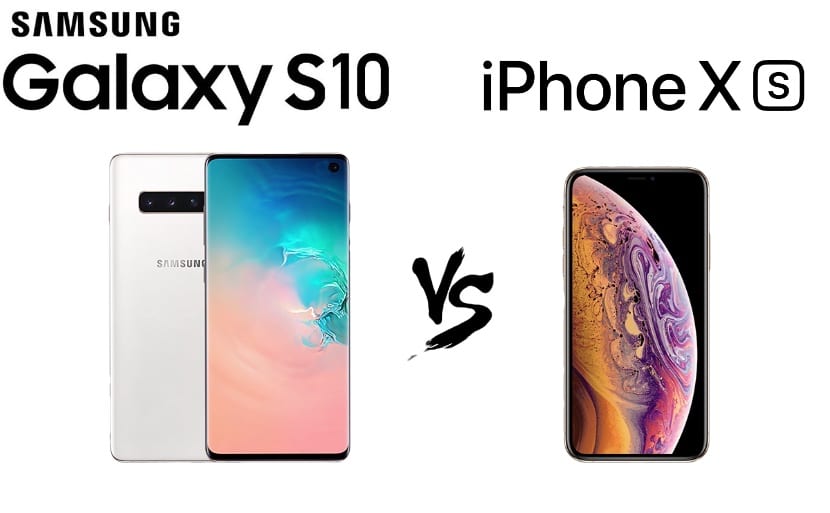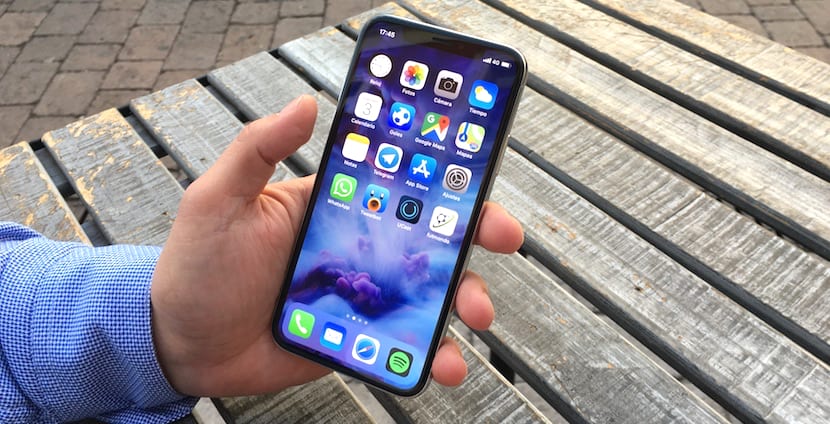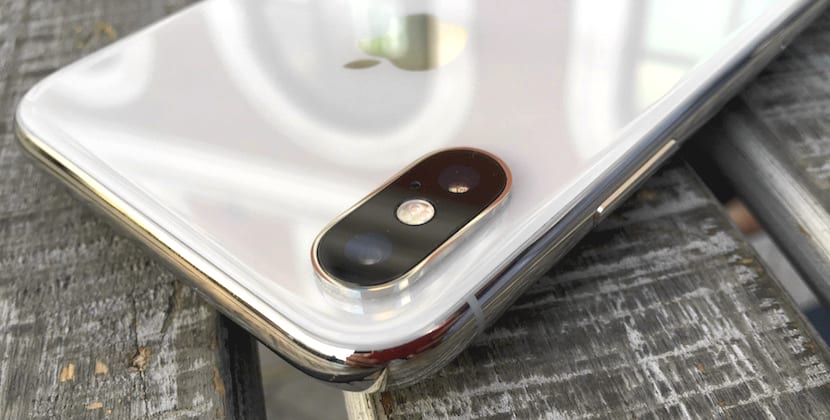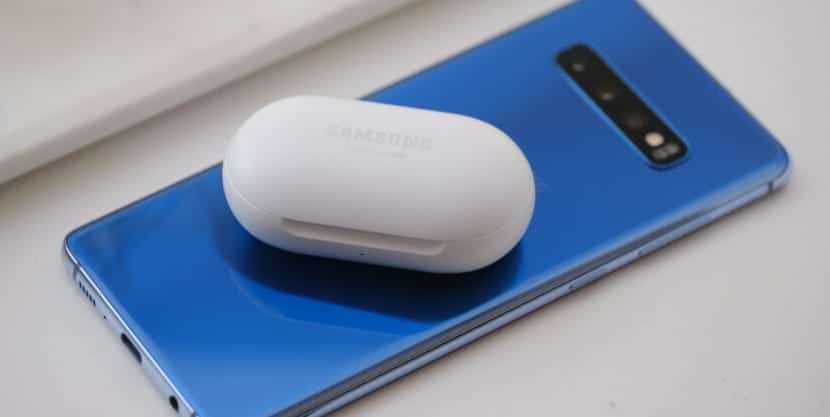
Last September, Apple launched the second generation of the iPhone X, an iPhone that was characterized by adopting a notch that later was copied by almost all Android smartphone manufacturers, including Xiaomi, LG and Hauwei, but not by the Korean firm Samsung, who had a much better solution.
With the presentation of Samsung Galaxy S10 In its three variants, we understand why. Samsung's new generation Galaxy S10 offers us a screen with practically no frames and also without any kind of notch. The gap necessary to be able to place both the front and rear cameras is found in a hole or island located at the top right of the screen.
Currently, and with the permission of Huawei, the two best high-end ranges on the market are offered to us by both Samsung and Apple. With the new generation of the S range, we are forced to make a comparison between the Galaxy S10 and the iPhone XS. We start with a comparison table where we can quickly see the specifications of each of them.
| Galaxy S10 | iPhone XS | |
|---|---|---|
| Screen | 6.1-inch - 19: 9 Quad HD + Curved Dynamic AMOLED display | 5.8-inch Super Retina HD OLED with 2436 x 1125 dpi resolution |
| Rear camera | Telephoto lens: 12 mpx f / 2.4 OIS (45 °) / Wide angle: 12 mpx - f / 1.5-f / 2.4 OIS (77 °) / Ultra wide angle: 16 mpx f / 2.2 (123 °) - Optical zoom 0.5X / 2X up to 10X digital zoom | 12MP dual camera with f / 1.8 wide angle and f / 2.4 telephoto lens - 2x optical zoom |
| Front camera | 10 mpx f / 1.9 (80º) | 7 mpx f / 2.2 with bokeh effect |
| Dimensions | 70.4x149.9x7.8mm | 70.9 143.6 x x 7.7mm |
| Weight : | 157 grams | 177 grams |
| Processor | 8 nm 64-bit Octa-core processor (Max. 2.7 GHz + 2.3 GHz + 1.9 GHz) | A12 bionic |
| RAM | 8GB RAM (LPDDR4X) | 4 GB |
| Storage | 128 GB / 512 GB | 64GB / 256GB / 512GB |
| Micro SD slot | Yes - up to 512 GB | No |
| Battery | 3.400 mAh compatible with fast and wireless charging | 2.659 mAh |
| Operating System | Android 9.0 Pie | iOS 12 |
| Local | Bluetooth 5.0 - Wi-Fi 802.11 a / b / g / n / ac / ax - NFC | Bluetooth 5.0 - Wi-Fi 802.11 a / b / g / n / ac - NFC |
| Embedded | Accelerometer - Barometer - Ultrasonic Fingerprint Sensor - Gyro Sensor - Geomagnetic Sensor - Hall Sensor - Heart Rate Sensor - Proximity Sensor - RGB Light Sensor | Face ID - barometer - 3-axis gyroscope - accelerometer - proximity sensor - ambient light sensor |
| Security | Fingerprints and facial recognition | Face ID (facial recognition) without fingerprint sensor |
| Sound | AKG-calibrated stereo speakers with surround sound with Dolby Atmos technology | Stereo speakers |
| Price | Starting from euros 909 | Starting from euros 1.159 |
OLED technology displays

The screens with OLED technology are currently the ones that offer the best quality in the market. Both Samsung and Apple offer us an OLED-type screen in the S10 and the iPhone XS respectively, both manufactured by Samsung. This technology not only saves battery when using the terminal, since only LEDs that use a color other than black light but they also offer us more vivid colors and similar to reality. So far the similarities.
The Korean company offers us a 6,1-inch screen size in the S10, while the iPhone XS screen reaches 5,8 inches, same screen size as Galaxy S10e, the little brother of Samsung's new S10 family. We will notice this difference in screen size in the 6 mm long that the Galaxy S10 has more than the iPhone XS.

While Apple needs to continue to use a notch at the top of the screen to be able to offer Face ID technology, Samsung has chosen to implement under the screen. an ultrasonic finger scanner, which differs from the optical in that it works in any condition, whether in humid environments, with wet fingers ...
The S10 also offers us a facial recognition system, but it is not as good as the one offered by the iPhone XS. In this way, Samsung offers us a practically frameless front, but with a perforation or island in the upper right part of the screen, where the front camera is located.
Cameras to capture any moment

The Galaxy S10 offers us three cameras on the back, which allows you to expand the range of possibilities when taking any type of photography, an option that we do not have with the iPhone XS, which only integrates two cameras on the back , and whose main purpose is to offer blur in the background of the photographs.
The photographic section of the Galaxy S10 is composed of a camera wide angle, one telephoto and one ultra wide angle, which allows us to capture any moment without having to move forward or backward continuously.
At the front, both models offer us two cameras with which we can obtain great selfies with the background out of focus, in addition to offering us a series of filters with which we can blur the background, change it or edit it on the fly.
Processor, storage and memory

Apple continues to design and manufacture its own processors as does Samsung with Exynos processors. Nevertheless, Apple designs its processors for its software, a specific software designed to work hand in hand with iOS, so the resources required for the smartphone to function properly are lower.
The interior of the iPhone XS is managed by the A12 Bionic, accompanied by 4 GB of RAM, more than enough memory to move with ease iOS 12, the version of the operating system that manages it.
For its part, the Galaxy s10 is managed, in its European version by the Exynos 9820 accompanied by 8 GB of RAM. In the Android range, memory is important, because it is not the processor manufacturers themselves (such as Samsung, Huawei or Qualcomm) who design the operating system, which Google is responsible for.
Apple offers us with the iPhone XS three storage modes: 64, 256 and 512 GB, while the Galaxy S10 is available in versions of 128 and 512 GB, but we can expand storage space by 512GB more.
All day battery

Another advantage, depending on how you look at it, that Apple is in the capacity of the battery. Meanwhile he iPhone XS offers us a 2.659 mAh battery, the Galaxy S10 reaches 3.400 mAh. Again we find the same problem: operating system designed for a specific processor. Despite the difference in capacity, both terminals arrive perfectly at the end of the day.
The Galaxy s10 also offers us, a reverse charging system with which we can use the back to charge any other device compatible with the Qi protocol. In this way, we can charge any other smartphone, including an iPhone, wireless headphones such as the Galaxy Buds or the smartwatch galaxy active, both from Samsung.
Apple and Samsung high-end prices
Apple offers us the 64 GB iPhone XS for 1.159 euros, a price that it increases as we expand the storage space. The Samsung Galaxy S10, in its version with 128 GB of storage and 8 GB of RAM memory is available for only 909 euros, 250 euros cheaper than the iPhone XS.
Which is better?

Both terminals with fantastic. When choosing one or the other, everything it depends on the operating system that we usually use or if we have other devices from the same company. While Apple integrates seamlessly with Mac computers and other iOS-powered devices, so does Samsung with the rest of its product range. The integration with the PC is good, but not as good as what Apple offers us.
If we do not have any preference regarding integration with the rest of the devices that we have, the best option without a doubt is the Galaxy S10, a terminal that we can find for 250 euros cheaper than the iPhone XS and that also offers us a better photographic section than the Apple model.